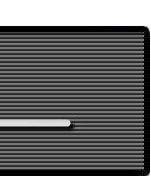|
Bank Angle and the Physics of Standard Rate Turns (continued)
V - Comparing the Approximations to the Exact Formula
At Low Speeds:
| |
Standard Rate Turn Bank Angle (Low Speeds)
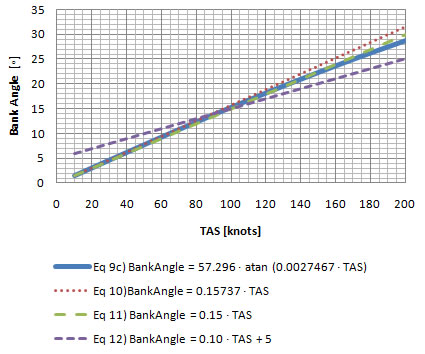 |
|
Chart 5-1
Chart 5-1 graphs each equation. The solid blue line is the exact equation  c. At a quick glance it seems that equation c. At a quick glance it seems that equation  remains consistently close to the exact equation throughout the true airspeed (TAS) range. This happens to be the rule of thumb equation outlined in the FAA handbook (see section I). remains consistently close to the exact equation throughout the true airspeed (TAS) range. This happens to be the rule of thumb equation outlined in the FAA handbook (see section I).
| |
Standard Rate Turn Bank Angle Error (Low Speeds)
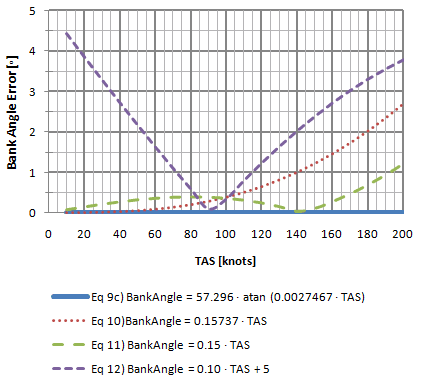 |
|
Chart 5-2
In chart 5-2 we can take a closer look at the deviations (errors) from the exact equation . Of the two equations that can be mentally calculated, once again equation  is the one with the least amount of error overall throughout the true airspeed range. Equation is the one with the least amount of error overall throughout the true airspeed range. Equation  is more precise than equation is more precise than equation  up to approximately 100 knots, but then the error increases abruptly after that. Equation up to approximately 100 knots, but then the error increases abruptly after that. Equation  is only more precise than the others throughout a very narrow range from about 83 to 100 knots. is only more precise than the others throughout a very narrow range from about 83 to 100 knots.
At High Speeds:
| |
Standard Rate Turn Bank Angle (High Speeds)
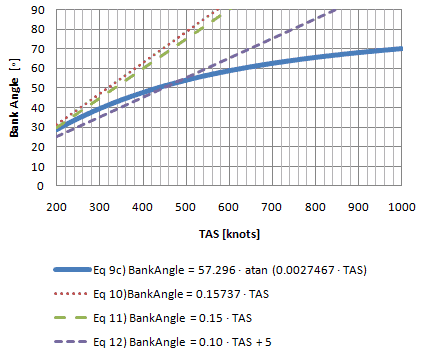 |
|
Chart 5-3
From chart 5-3 it seems equation  is better over a wider range than the others. It is also evident that equation is better over a wider range than the others. It is also evident that equation  begins to deviate greatly from the exact equation at close to 600 knots. begins to deviate greatly from the exact equation at close to 600 knots.
| |
Standard Rate Turn Bank Angle Error (High Speeds)
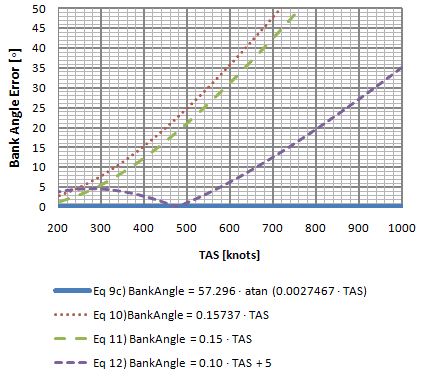 |
|
Chart 5-4
Chart 5-4 gives a clearer look at how much each equation is deviating from the exact equation. Even though equation  is better over a wider range, equation is better over a wider range, equation  works better than equation works better than equation  up to about 300 knots. Equation up to about 300 knots. Equation  has an error of less than 5o from 300 knots up until about 580 knots. has an error of less than 5o from 300 knots up until about 580 knots.
Conclusion:
Its is probably best to use equation  up to 300 knots. From 300 knots to 580 knots equation up to 300 knots. From 300 knots to 580 knots equation  is better overall in that range. Above 580 knots it's probably best not to use any of the approximate equations. Beyond around 600 knots the bank angle is going to start to exceed 60o and it will be highly unlikely that any civilian aircraft is going to want to exceed that bank angle while flying instruments. is better overall in that range. Above 580 knots it's probably best not to use any of the approximate equations. Beyond around 600 knots the bank angle is going to start to exceed 60o and it will be highly unlikely that any civilian aircraft is going to want to exceed that bank angle while flying instruments.
|

